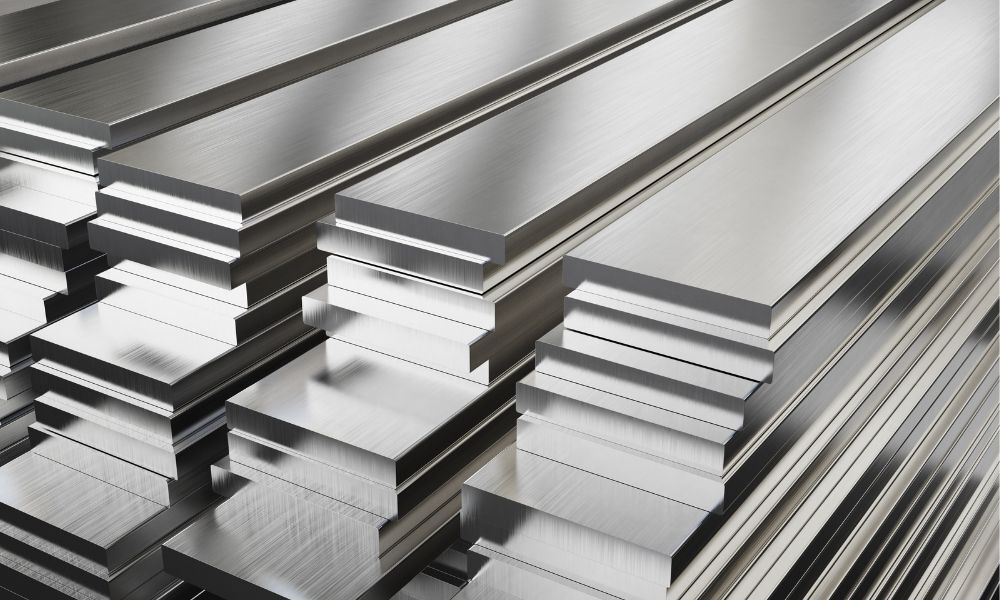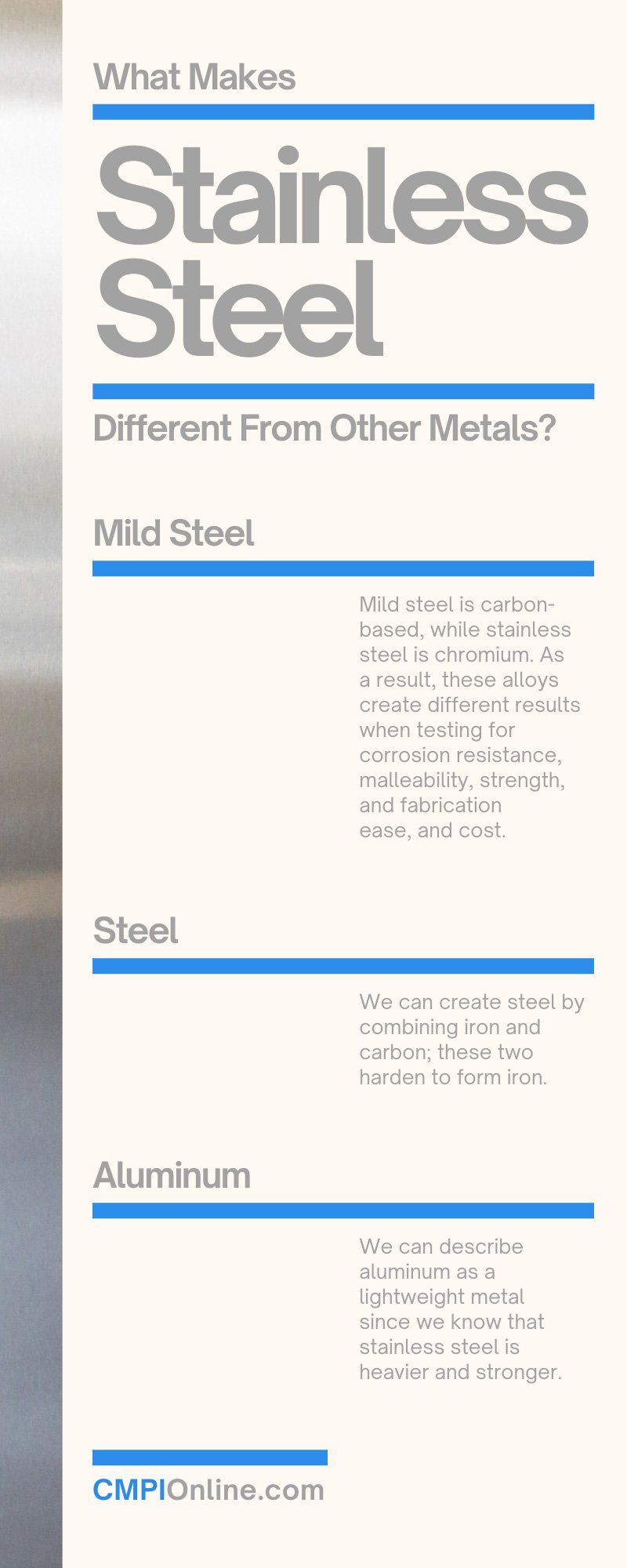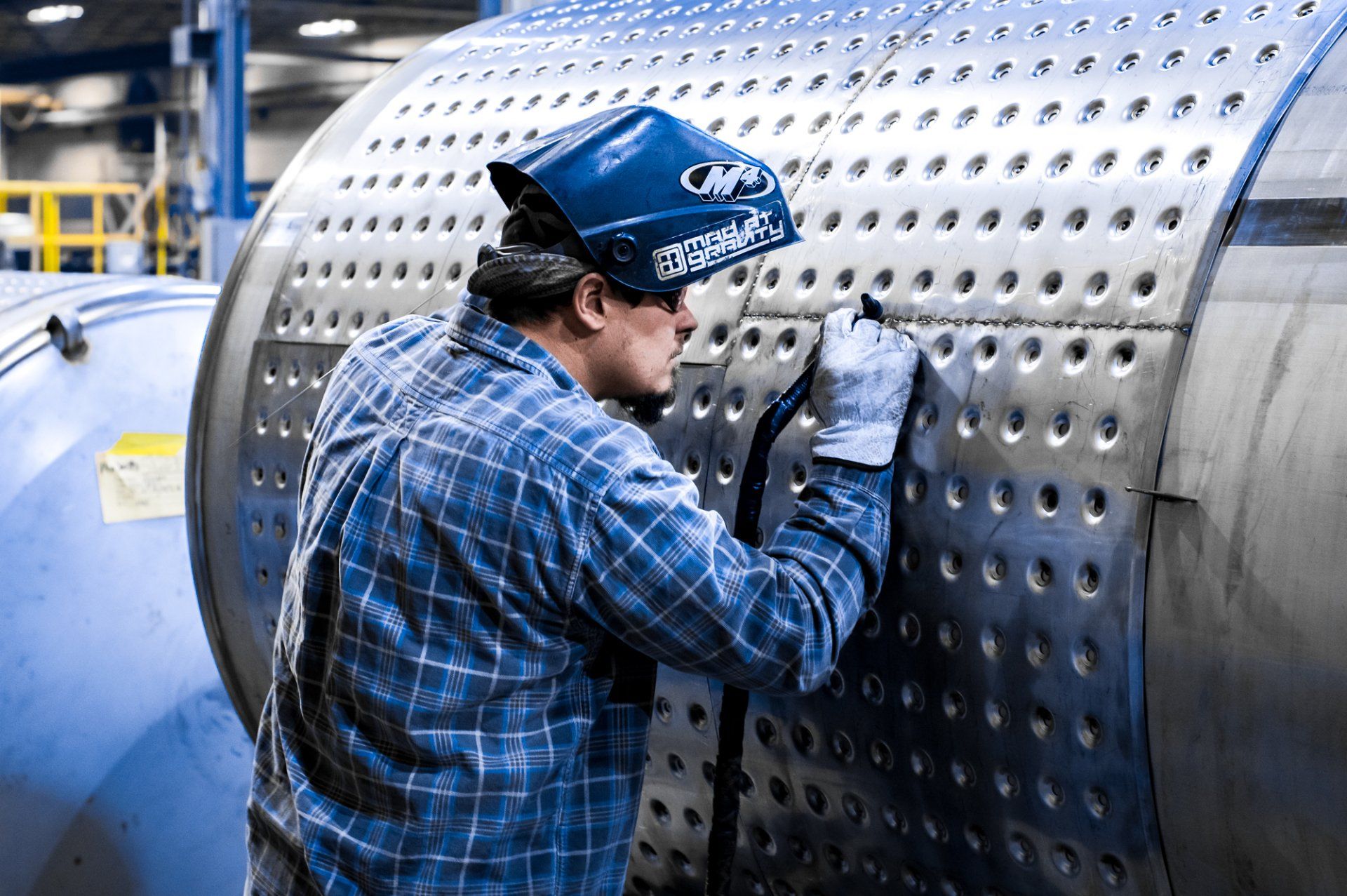What Makes Stainless Steel Different From Other Metals?

As a metal made of alloys from iron, chromium, and nickel, stainless steel is an environmentally friendly option with plenty of characteristics. Not only is stainless steel durable, but it also works well in every industry, including architecture, the medical field, and logistics. Aside from the great industries that stainless steel has influenced, what makes stainless steel different from other metals?
The Various Properties of Stainless Steel
There are many different values that stainless steel has, such as being aesthetically pleasing to view. In addition, the material comes in different surface finishes, such as matte and bright. More often, architects use this material over others due to its effectiveness of not getting damaged when transforming into different interior focal points, furniture pieces, and metal fixtures.
Some other added properties of stainless steel include having built-in fire resistance that won’t damage when hit with more than 800 degrees. In addition, the material can flex and mold into the design needed to create a building or furniture piece with its durability.
Other highly valued properties in stainless steel involve having a protective chromium oxide layer that can regenerate itself if scratched—also, this material’s environmentally friendly. When using stainless steel, you can add different alloying elements to the material. However, each one has a different solution.
- Austenitic S300
- Manganese Austenitic (200 series)
- Ferritic or 400 series
- Duplex or Austeno-ferritics
- Martensitic
The Use of Stainless Steel
We use stainless steel in a wide array of fields, such as medical and food. Many industries have guidelines on the type of material used and what alloys are suitable to apply. With each alloy, they produce a different solution for each industry.
The food industry has plenty of use for stainless steel, especially for the sanitization of products, such as kitchenware. Kitchenware’s easy to clean and maintain, as stainless steel is a great material to use.
In the chemical, oil, and gas industries, you’ll likely find different items made from stainless steel—for example, items like large tanks, pipes, and tubing, and even pumps and valves. As a side note to help avoid corrosion, nuclear power plants use stainless steel pipes.
Also, stainless steel made a lasting impression on the environment by being used more in modern architecture. With its irresistible anti-corrosion properties and built-in ability to recover when scratched, stainless steel has helped improve the environment and change our view of architecture.
Stainless Steel Compared To Other Metals
Stainless steel is excellent on its own, let alone when compared to metals. So, when considering other metals, we wonder what makes stainless steel different from other metals? To help figure the question out, here’s a further breakdown of the different metals compared to stainless steel.
Mild Steel
Mild steel is carbon-based, while stainless steel is chromium. As a result, these alloys create different results when testing for corrosion resistance, malleability, strength, and fabrication ease, and cost.
With a chromium base, stainless steel has a higher count of corrosion resistance compared to mild steel. When interacting with oxygen, the stainless steel creates a natural chromium oxide coding that protects the original surface, thus making it resistant to corrosion.
Although mild steel doesn’t have the advantage of creating its natural corrosion resistance, the material’s not as hard to fabricate as stainless steel. However, mild steel would require more processing to prevent rust. Processes like galvanizing can help protect mild steel from rusting. When doing fabrication, mild steel tends to be a highly favored material since it’s simpler to fabricate.
All in all, stainless steel’s an outstanding material with many benefits, such as aesthetic with tremendous corrosion resistance and low maintenance. However, when compared to mild steel, stainless steel is an expensive alloy.
Steel
We can create steel by combining iron and carbon; these two harden to form iron. Since stainless steel is resistant to corrosion, iron does receive plenty of stains and rust, which can be good if you collect iron goods. However, when it comes down to strength between these two materials, steel shockingly rates as the toughest and most vigorous.
As we move further into our comparison, we see that stainless steel isn’t magnetic because it contains chromium and nickel, making a 304 grade. On the other hand, steel is magnetic since it doesn’t contain these properties.
Furthermore, steel isn’t pleasing to look at due to its dull appearance, especially with a matte finish. However, stainless steel puts steel at a disadvantage as it contains a chromium alloy that gives it a shinier appearance.
Then again, steel is a more malleable material, durable, and distributes better heat than stainless steel. As for stainless steel, the thermal conductivity is lower than its counterpart. Nevertheless, due to the great strength of steel, it’s used mainly in the automotive industries and on electrical appliances because of the outstanding magnetic properties found inside the material.
Aluminum
We can describe aluminum as a lightweight metal since we know that stainless steel is heavier and stronger. However, comparatively speaking, aluminum is a third of the weight of stainless steel and gets used in various industries like airplane and bicycle manufacturing. Therefore, even with stainless steel’s strength, aluminum wins due to the weight ratio.
Additionally, aluminum tends to be less expensive, but both materials have strong corrosion resistance, which helps since both are used in manufacturing and construction. Also, similar to steel, aluminum is a great conductor of heat.
Finally, aluminum’s surface is soft, making it easy to cut, stretch, and manipulate. With aluminum being very flexible, it can meld into any form you desire. Since the material doesn’t break, it’s easier to work with than stainless steel.
The 3 Main Types of Stainless Steel
As we’ve learned the differences between stainless steel and other metals, let’s find out a little more about what else makes stainless steel different from other metals. For starters, stainless steel can have different alloys and finishes to help perform different outcomes.
For instance, carbon-based stainless steel is made durable and lasts longer than other alloys. As a result, you’d likely find carbon stainless steel in the production of food-grade utensils and cookware.
As for chromium, this type of stainless steel doesn’t tarnish and resists corrosion. As a result, chromium-based stainless steel is more common in architecture.
On the other hand, nickel-based stainless steel helps improve steel’s corrosion-resistant properties when materials are formed and welded. In addition, using nickel in stainless steel makes the material more flexible.
All in all, stainless steel is one of the finest metals to use in many industries. However, the best type is affordable and can help make a production run smoothly and improve manufacturing in the industry.
Custom Manufacturing and Polishing Inc. believes in dreamers. We believe that if you can dream of a product, we can help build it through our stainless steel fabrication shop. We can help you pick the best material and share the benefits of using stainless steel in your industry when you partner with us. For more information on stainless steel and other metals, contact us today.






